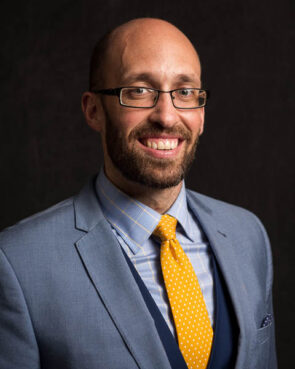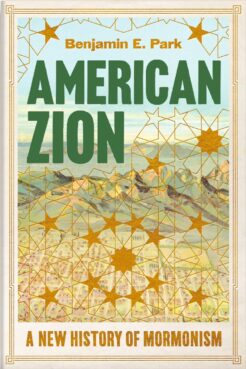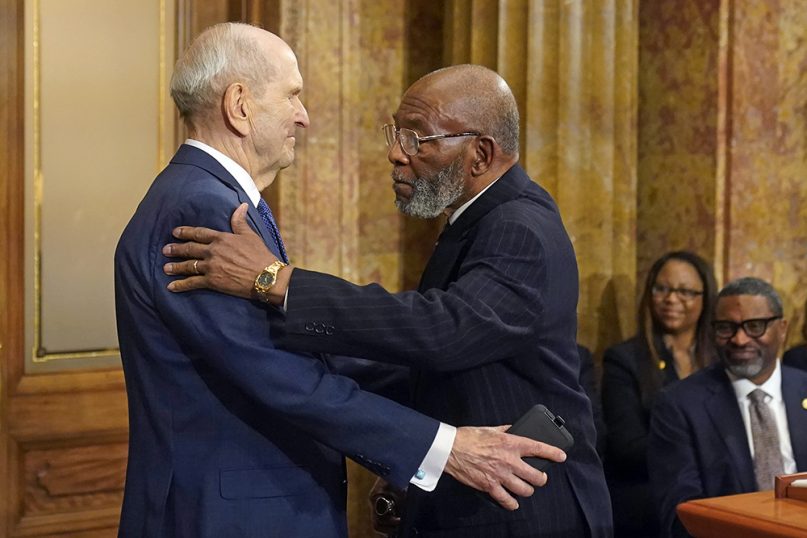(RNS) — No one would be surprised to learn that The Church of Jesus Christ of Latter-day Saints has been shaped by the culture wars in the 21st century. In 2008, for example, it devoted considerable effort to defeating same-sex marriage, only to reverse that political stance in 2022. It sanctioned racial inequality for decades, with then-Apostle Ezra Taft Benson famously equating the Civil Rights Movement with dangerous, anti-American communism. But in the last few years it has donated more than $9 million to the United Negro College Fund.
So yes, contemporary Mormonism has been deeply shaped by the culture wars, carefully negotiating its place in the mainstream of the United States.
But historian Benjamin Park says that’s nothing new. In fact, it’s been a major theme from the very beginning in the 1830s.
“Even within the first year of the church being organized, all those questions about gender and race come to the forefront,” said Park, the author of the new one-volume history “American Zion: A New History of Mormonism,” in a Zoom interview with Religion News Service. Emma Smith, the prophet’s first wife, “was agitating for change and a space within the community within months of the church being organized. And the revelation that Latter-day Saints now know as D&C 25 came in response to her petitioning about the place of women.”

Historian Benjamin E. Park. (Photo by Mike Hoogterp)
In that revelation, Emma was counseled to “murmur not” and to be a comfort and helpmeet to her husband. She was also instructed to “expound scriptures” and to create a hymnal for the fledgling church.
That wasn’t the end of the early debates. One of the earliest LDS converts in Kirtland, Ohio, was Laura Hubble, who called herself a prophetess and aimed to lead others by the power of revelation. Another was “Black Pete,” a formerly enslaved convert who participated in charismatic, enthusiastic worship practices in Kirtland. How much authority could these two marginalized people have in the exciting new religious movement?
Not much, Park said. Faced with the question of how much equality it would grant women and people of color, “the answer in both cases was a mainstream patriarchal white space. And so Laura Hubble and Black Pete end up leaving the faith and answers to Emma Smith’s questions reaffirmed the gender binary of men being in charge and women being in the pews.”

“American Zion” by Benjamin E. Park. (Courtesy image)
Despite those conventional outcomes, the struggles over authority and marginalization continued. “American Zion” chronicles, in particular, how the polygamy wars of the 19th century tapped into questions about gender and the family — with the outcome that Mormons wound up in the 20th century becoming the exact kind of monogamists they had so vocally despised decades earlier.
As an accomplished historian, Park is keenly aware of the dangers of “presentism,” in which the debates of the historian’s own era are read back into history. But that’s not what’s going on, even though tensions about race, gender and sexuality are very much a hallmark of our own era. The fact that such debates were woven into Mormonism from the very beginning is part of what makes the religion “such a compelling story to people, even to people outside the faith,” he said. “People believe it can tell us something about the society that we live in now.”
The response to “American Zion” so far would seem to bear that out. Park has just finished a five-week book tour to receptive crowds, and most early reviews have been positive. The New Yorker noted that the book depicts the LDS church “as both marginalized and marginalizing,” which reflects the tensions Park explores.
That push-and-pull dynamic has extended to the present. Park’s final pages cover the first five years of Russell M. Nelson’s presidency, calling the 99-year-old leader the faith’s “first post-pioneer prophet.”
“He seems more likely than any other previous leader of the faith to strip away what he sees as unnecessary cultural attachments. At other points, I called him a venture capitalist and market strategist who is isolating Mormonism down to its core fundamentals,” Park said.
“Much of what he’s doing, I think, is the culmination of what the church has been moving toward over the last century,” he continued. “It’s this American assimilation or Christian assimilation, while still maintaining what they think their key distinctions are. Those distinctions are rooted in an anxiety centered on the traditional family. Nelson, more than anyone else, has emphasized not just a retrenchment on the traditional nuclear family, but that the gospel is centered in that family. That’s why we are giving up an hour of our worship services so you can go home and be with your family.”

The Rev. Amos C. Brown, right, an NAACP leader, and President Russell M. Nelson of The Church of Jesus Christ of Latter-day Saints hug during a news conference, June 14, 2021, in Salt Lake City. (AP Photo/Rick Bowmer)
Park noted that Nelson has chosen to step in on some culture war issues, like LGBTQ rights, while moving forward with “other assimilation efforts like what he’s done with the NAACP.” Meanwhile, he is “reaffirming prophetic authority” to an unusual degree. Always, the challenge for the church is “to be Christian as well as unique at the same time.”
In researching that part of the book, Park discovered what he thinks is “a method to his [Nelson’s] madness” — a common theme that undergirds the flurry of activity that has marked his tenure as president. “It’s almost like a capital exchange where we will give up the Mormon name, our pioneer pageants, and our murals in the temples. But in exchange, we’re going to stick with our nuclear family and our temple worshipping and our prophetic priesthood authority.” Both retrenchment and assimilation are occurring at the same time, he said. “And while it might seem paradoxical that those things exist simultaneously, they actually feed off of each other and one justifies or validates the other.”
And it’s been that way for nearly 200 years.
Related content about Mormon history:
Polygamy, politics, and frontier justice: Why Nauvoo still matters
Joseph F. Smith: A traumatized and beloved Mormon leader
Spencer W. Kimball diaries shine a light behind the scenes of modern Mormonism






